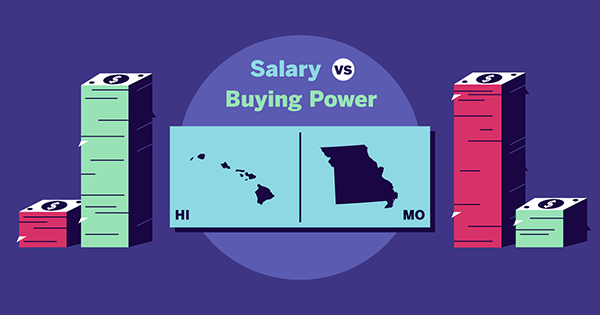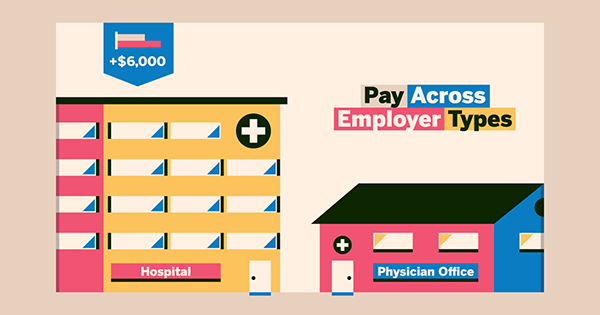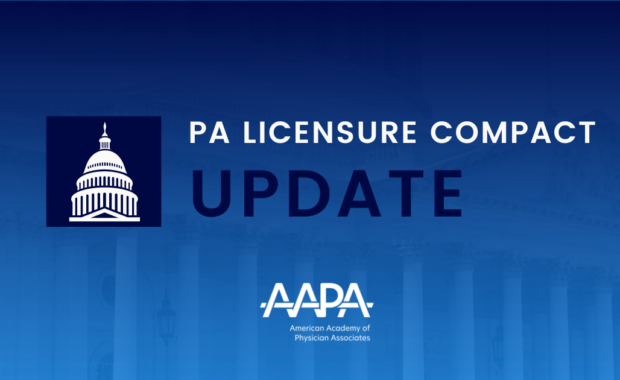Inside Intel on PA Salaries
13,000 PAs Share Details of Compensation
By Kate Maloney
September 18, 2019
Over 13,000 PAs from around the country completed this year’s AAPA Salary Survey, and the 2019 AAPA Salary Report is available now. There are pages of data, analysis, and information that can help you negotiate better contracts, keep pace with your peers, and get an edge when it counts. Here, we dig deeper into what some of the data says about PA salaries today, why where you live or where you practice actually matters, and how you can use this information to your advantage when it comes time to relocate, change jobs, or renegotiate.
New: more complete picture of compensation in the profession
While four out of five PAs get paid a base salary, one out of five PAs gets paid either an hourly rate or based on productivity. For the first time, this year’s national summary (the first 20 pages of the Salary Report) includes all three types of compensation when reporting the high-level salary trends in the PA profession. AAPA decided to make this change to better represent what compensation really looks like across the board. Don’t fret, though – the Salary Report still includes all the data you need, broken out by type of compensation, in the tables that follow the national summary.
[What’s Different About 2019’s Salary Report?]
Where you live makes a big impact on your spending power

While it’s important to keep total compensation in mind, you also need to take into account cost of living. A higher salary in a state with a high cost of living won’t help you afford as big of a house, as nice of a car, or as expensive of a tuition for your children, as living in a state with a slightly lower salary but a very low cost of living. How cost of living impacts salary is a bit complicated, so let’s break it down together.
C2ER’s Cost of Living Index
For the AAPA Salary Report, we use The Council for Community and Economic Research’s (C2ER) Cost of Living Index scores. C2ER publishes its Cost of Living Index quarterly, and reports data on cost of living across the country. C2ER looks at 60 goods and services and relies on 300 independent researchers to collect the prices of these 60 items in each location. The goods and services fit into one of six categories: food, housing, utilities, transportation, healthcare, and miscellaneous.
Each quarter, C2ER uses this pricing information to determine a baseline or national average for these goods and services. This is the basis for their Cost of Living Index: the national average cost for 60 goods and services is determined, and the Cost of Living Index indicates whether a specific area is below this national average or above it, and by how much. For example, a composite score of 150 would indicate that it takes 1.5 times the national average to live in that area.
What This Means for You
There are salary and cost of living differences throughout the country, so let’s put these numbers in context. In Hawaii, the average PA salary is $113,500. Seems pretty good, right? It’s $7,500 above the national median base salary! When you factor in Hawaii’s high cost of living, though, your buying power goes down significantly – by nearly $28,000! When adjusted for cost of living, a $113,500 salary in Hawaii decreases to only $85,790 in terms of buying power. It is now below the national PA average salary – by $20,210. Would that difference in salary have an effect on your life? We bet so!
With that in mind, you might want to look at Missouri. Missouri’s median base salary is a little below the national average — $99,000. But goods and services in Missouri are quite inexpensive compared to the rest of the country. Missouri has a very low cost of living, so your $99,000 will go a lot further. How much further? Almost $12,000 further! In Missouri, $99,000 in salary gives you the buying power of $110,738. That is almost $25,000 more than the buying power of your PA colleague in Hawaii!
[PA-specific Cost of Living Calculator]
Of course, examples like these apply when you are an hourly PA as well, and our 2019 Salary Report shows separate cost of living tables based on base salary and hourly wages. As these examples illustrate, cost of living is probably affecting you more than you realize. Since the PA profession is both portable and flexible, make sure you’re considering cost of living when you’re thinking about relocating and when you’re negotiating your salary. Use the 2019 AAPA Salary Report and our PA-specific Cost of Living Calculator to educate and empower yourself when it’s time to talk to your employers about money.
Money isn’t everything in your compensation package

The money you make is certainly the biggest part of your compensation package, but it shouldn’t be everything. There are a lot of other expenditures your employer might cover for you. Don’t pay out of your own pocket until you have a conversation about professional development and additional compensation – there’s a good chance you’ll be able to include some or all of these items as part of your overall package.
A few things to consider: Does your employer cover your licensure fees? Your annual CME needs? Do you receive a bonus? Is call time part of your salary? Or do you receive an additional $2 per hour of availability? What about tuition reimbursement, or student loan repayments?
Of the more than 13,000 PAs who completed this year’s Salary Survey, almost 50 percent receive bonuses, and other benefits include paid time off, state licensure fees, professional membership fees, travel and attendance to AAPA Conference. Some PAs even get reimbursed for things like cell phones or laptops – hardware they need to perform their job duties. Bonuses, depending on your specialty and your practice’s pay model, can be upwards of $50,000. That’s certainly worth a conversation.
There is no off-the-shelf offer package, but there are a lot of professional costs associated with being a healthcare provider, and your employer should be helping you shoulder some of that burden. If you’re not talking to your employers about other benefits, it’s like having a Visa gift card and never using it!
Your work setting matters

No one wants to go to work in a place they don’t enjoy, or for a boss they can’t support. But for PAs, there’s a little more to it than that.
One of the benefits of the PA profession is that it’s in demand. The job market is growing, and many practice settings are eager to hire PAs. But, if we’re strictly talking compensation (PAs paid a base salary, hourly wage, or productivity pay), you should consider working in a hospital work setting. Across the country, PAs in hospitals typically make $6,000 more than those whose work setting is in an outpatient clinic or physician office, and these two broad categories account for almost 90% of PA work situations. Depending where in a hospital you work, your salary may be much larger than your colleagues at a physician office. For example, a full-time PA in a hospital emergency department can make almost $116,000!
There are a few other things to consider besides compensation if you’re thinking of working for a hospital. Consider your work style, and the type of environment you’re seeking out. Past and current analyses by AAPA have shown that PAs in hospitals tend to work longer shifts but see fewer patients per week. Another thing to keep in mind: hospitals tend to have more leadership opportunities. Of course, physician practices, too, offer opportunities, but if you’re interested in transitioning to management or administration one day, you should start considering this as part of your career planning today.
Additional resources:
AAPA’s 2019 Salary Report
Wage Parity for PAs Remains a Goal in 2019
What’s Different About 2019’s Salary Report?
Kate Maloney is AAPA’s senior manager of corporate communications. She can be contacted at [email protected].
Thank you for reading AAPA’s News Central
You have 2 articles left this month. Create a free account to read more stories, or become a member for more access to exclusive benefits! Already have an account? Log in.



